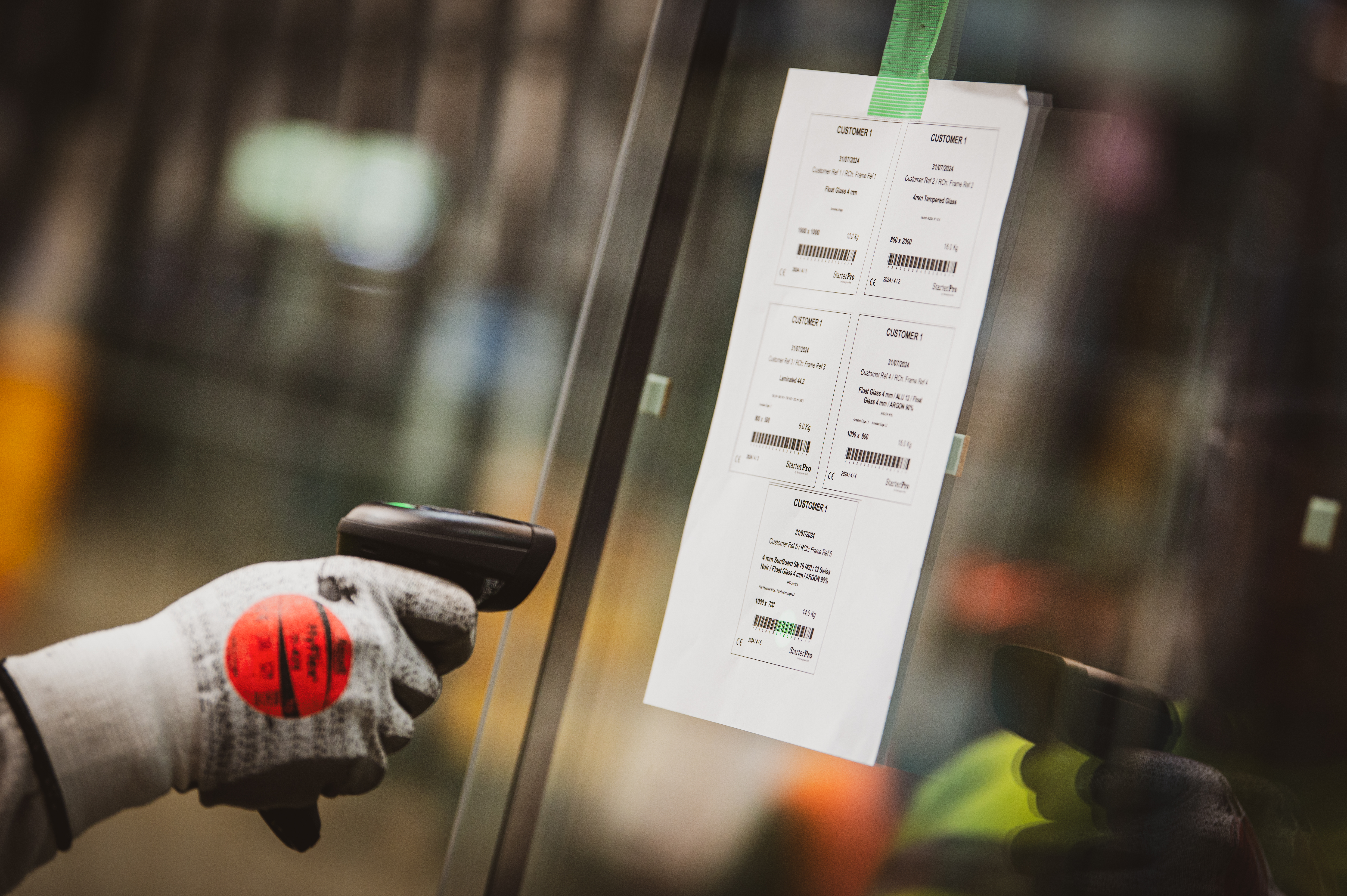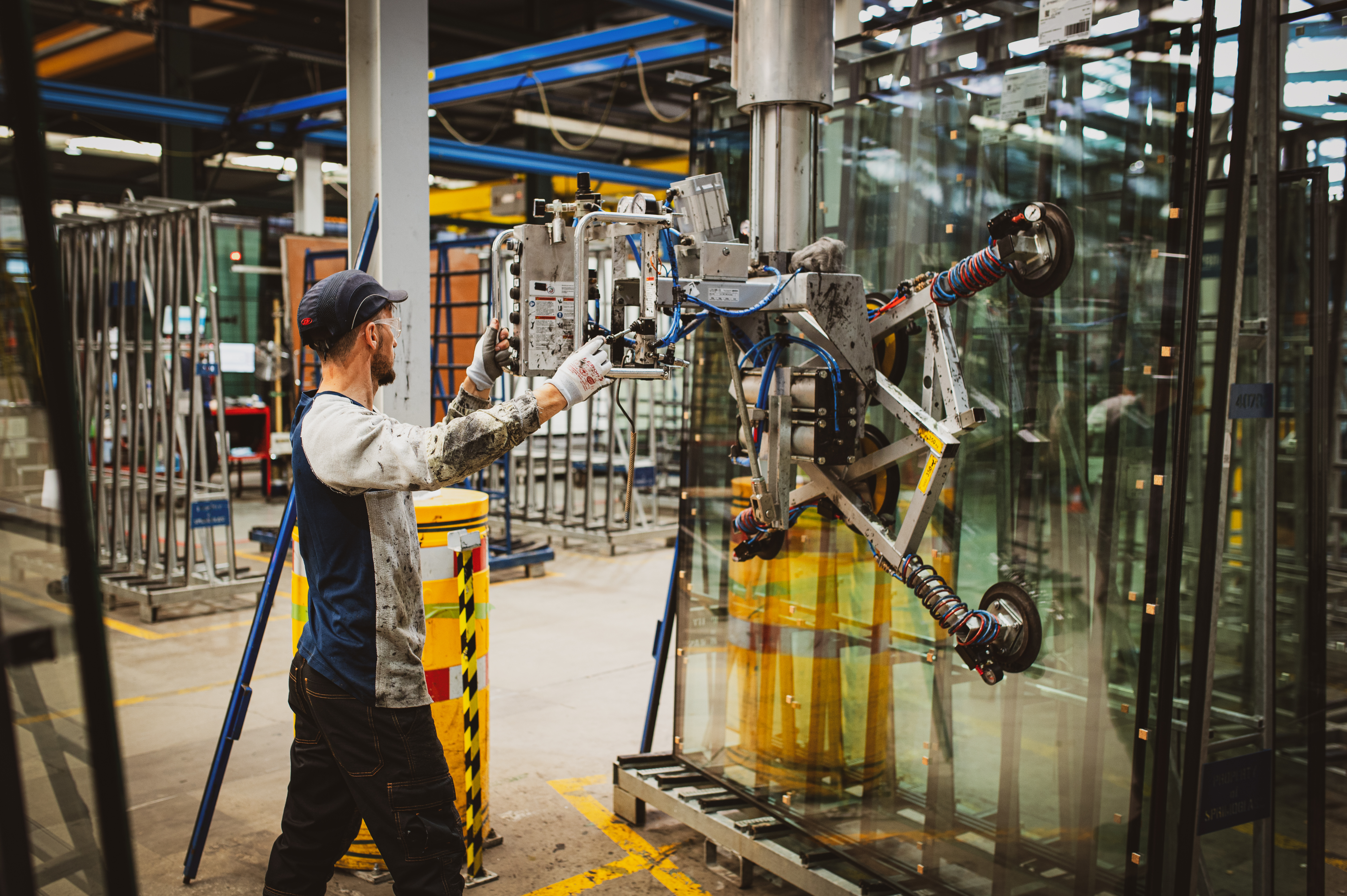Is production planning slowing down your glass manufacturing business? Do missed deadlines, material waste, or rushed jobs regularly disrupt your schedule and stress out your team?
Picture this: you’ve got orders lined up, machines scheduled, and deadlines confirmed—until one component is delayed, or a resource runs out, and suddenly the whole plan collapses. In glass processing, even one unexpected delay can trigger a chain reaction that affects customer satisfaction, increases costs, and leads to chaos on the production floor.
That’s why having the right production planning system isn’t just helpful—it’s essential. And it’s something we’ve seen firsthand, working with glass manufacturers who’ve gone from daily firefighting to streamlined, confident planning thanks to the right tools.
In this article, you’ll discover:
- The key challenges glass manufacturers face in production planning
- The must-have features of an effective planning system
- How to evaluate and choose the right system for your business
By the end, you’ll know exactly how to identify the right system to streamline your operations and boost efficiency.
The challenge of managing glass production: why the right system matters
Glass manufacturing is a dynamic and fast-paced industry, where customer demands, machine availability, and material efficiency all need to be perfectly aligned. If even one of these elements is out of sync, it can create delays, increase costs, and lead to customer dissatisfaction.
In this environment, relying on outdated or inefficient production planning systems can have serious consequences:
- Underutilized machines: Machines running below capacity can result in wasted time and lost productivity.
- Wasted materials: Poorly optimized cutting processes lead to higher scrap rates, increasing material costs.
- Missed deadlines: Without a system that can handle the complexity of your production schedules, meeting customer delivery dates becomes a challenge.
A well-optimized production planning system can help address these issues by improving efficiency and reducing scrap rate.
If you’re interested in understanding more about the common challenges glass processors face when it comes to production planning, take a moment to read our article on Top 5 Production Planning Issues Glass Processors Struggle With (and How to Avoid Them), where we dive deeper into the obstacles and solutions that can help you improve your operations.
Let’s look at the features you should expect from a system that can optimize your production flow and ensure you meet your customer’s expectations, every time.
5 key features every glass processor needs in a production planning system
Without the right system, inefficiencies will keep piling up. So, what should you look for in a production planning solution?
1. Seamless integration with production orders
In glass manufacturing, production orders tell you what to make, when to make it, and in what order. If your system can’t handle orders efficiently, your operation will quickly become a mess, leading to mistakes and delays.
What to look for:
- Dynamic order management: The system should allow for easy, real-time creation and modification of orders. This lets you accommodate last-minute customer requests or any changes in production.
- Live status tracking: You need to see which orders are in progress, which ones are completed, and which ones are delayed, so your team can act fast and stay on track.
- Intelligent prioritization: Not all orders are equally urgent. Your system should prioritize based on delivery deadlines and machine capacity.
Inventory availability also plays a key role. A robust system should cross-check production orders against current stock levels to ensure raw materials and components are available before launching production. Otherwise, you risk starting jobs that later stall due to missing glass types, interlayers, or hardware—disrupting flow and extending lead times.
How a system delivers: Look for a system that allows for real-time order management, ensuring adjustments can be made swiftly in response to changes. When there’s a change in demand or a machine breaks down, the system automatically adjusts, ensuring nothing disrupts the workflow. An effective system ensures adjustments can be made swiftly in response to changes. This keeps operations running smoothly, even with last-minute changes.
Once your orders are being tracked efficiently, the next crucial step is ensuring that your scheduling process keeps pace with production needs—this is where smart scheduling and workload balancing come into play.
2. Smart scheduling & workload balancing
Glass production isn’t a single-step process—it involves cutting, processing, assembly, and delivery. Without the right schedule, you’re at risk of underutilizing machines, missing deadlines, or creating inefficiencies.
What to look for:
- Automated scheduling: The system should create the most efficient production sequence based on machine and workforce availability.
- Dynamic workload distribution: If one machine is overloaded, the system should automatically balance the workload to other machines.
- Interactive scheduling: Sometimes, human adjustments are needed. The system should let planners tweak the schedule as needed for specific workflows or expertise.
How a system delivers: A good system should continuously adjust schedules based on real-time factors, ensuring efficient machine utilization and on-time deliveries. If a disruption occurs, the system reallocates tasks automatically, balancing the load to optimize efficiency.
Ex. if Machine A is overloaded, the system reassigns the task to Machine B
While efficient scheduling is essential, optimizing the use of raw materials is equally important. That’s why the next feature to consider is how your system can optimize glass cutting and sorting to minimize waste.
3. Optimization for glass cutting & sorting
Glass sheets aren’t cheap, and every bit of scrap is costing you money. That’s why cutting optimization is so important in any glass manufacturing operation. Your production planning system should integrate cutting optimization to minimize material waste.
What to look for:
- Automated cutting optimization: The system should automatically calculate the best way to cut large sheets to maximize material use and minimize scrap.
- Sorting system compatibility: If you use a sorting center, your system should ensure that glass pieces are stored and retrieved in the right order.
- Flexible order sequencing: Sometimes you need to adjust the production sequence based on delivery schedules or machine availability.
How a system delivers: Look for a system that integrates cutting optimization to ensure you achieve the best material yield and minimize waste. Plus, it should integrate seamlessly with sorting centers, ensuring glass pieces are processed in the right order, reducing handling errors and wasted time.
For example, a manufacturer working with large glass sheets can reduce scrap rate by 2% by using an automated cutting algorithm. Instead of manually arranging cut patterns, the system calculates the most efficient way to cut multiple pieces from a single sheet, minimizing scrap and saving costs.
Once you’ve addressed cutting optimization, flexibility in how you approach planning is key. Let’s now explore how different levels of automation in your production planning system can further streamline operations.
4. Flexible planning: manual, semi-automatic & automatic
Every factory is different. Some prefer full automation, while others need more manual control to handle complex workflows. The best production planning systems offer flexibility, allowing you to choose how much automation you want.
What to look for:
- Manual planning: Full control over scheduling, ideal for factories with minimum but unpredictable workflows.
- Semi-automatic planning: The system suggests an optimized schedule, but planners can make tweaks based on real-world experience.
- Fully automatic planning: The system assigns tasks, balances workloads, and calculates delivery dates with minimal human intervention.
How a system delivers: Choose a system that offers flexibility in scheduling, allowing for manual, semi-automatic, or fully automatic options based on your operational needs. This flexibility lets you adapt to changing conditions without sacrificing efficiency.
This is ideal for operations with many steps, not just large-scale production. Plus, automation ensures continuity—if the scheduler is absent, a trained team member can take over without disruption.
Having a flexible planning system is a great start, but at the end of the day, your system must ensure that delivery deadlines are met. Let’s now discuss how delivery date-driven planning ensures you stay on track to meet customer expectations.
5. Delivery date-driven planning
On-time delivery is non-negotiable in glass manufacturing. Your production planning system should revolve around meeting customer deadlines.
What to look for:
- Delivery deadline prioritization: The system should plan production backwards from the required delivery date.
- Customizable lead times: Different products require different processing times. The system should adapt to these variations.
- Automatic adjustments for delays: If something goes wrong—a machine breaks down, for example—the system should automatically recalculate and adjust the schedule.
Subcontracted steps should also be factored into the plan. If certain operations—like tempering—are outsourced to suppliers, your system needs to account for those external lead times.
For example: if you manufacture insulating glass units and need tempered panes from a third party, the delay from that supplier can significantly impact your final delivery date. Your planning system should link purchase orders to production deadlines to ensure realistic scheduling.
How a system delivers: Look for a system that prioritizes delivery deadlines and can adjust production steps to ensure on-time delivery. It should automatically adjusts when things change, so your team is always on track to meet deadlines, no matter what.
Even with tight schedules, your production system needs to be adaptable to different processes. Let’s look at how a customizable system can handle varying workflows, no matter the complexity.
6. Adaptability for different manufacturing processes
No two glass manufacturers are the same. Some focus on basic assembly, while others handle more complex processes like edge polishing, drilling, and lamination. Your production planning system should be able to handle all kinds of workflows with ease.
What to look for:
- Customizable workflows: The system should allow you to define unique production steps based on the types of glass products you make.
- Production grouping: Orders should be grouped based on processing needs and deadlines, making your workflow smoother.
- Machine integration: The system should integrate with CNC machines, tempering ovens, and other specialized equipment.
How a system delivers: Choose a system that is customizable to fit the specific workflows and complexities of your manufacturing processes. Whether you’re creating complex double-glazed units or simple decorative glass, it should adapt to your needs and integrates with your machinery for streamlined operations.
With all these features in mind, you’re now equipped to evaluate whether a production planning system is truly meeting your needs. Let’s summarize the essential qualities of a system that can revolutionize your operations.
How to identify the right system for your business
So, what makes a great production planning system for glass manufacturing? It’s simple:
- Does it integrate with production orders and track progress in real-time?
- Can it automate scheduling and balance workloads?
- Does it optimize cutting and sorting to reduce waste?
- Can it adapt to different planning needs (manual, semi-automatic, or automatic)?
- Will it ensure on-time delivery, even when things change unexpectedly?
- Can it handle complex workflows and integrate with your equipment?
If the answer is “yes” to all of these, then you’ve found a production planning system that will drive real efficiency in your operations.
Taking the next step towards optimized production
Choosing the right production planning system can streamline your processes, reduce waste, and help you meet deadlines with ease.
Managing production, machines, and customer deadlines can be overwhelming without the right tools in place.
Many glass manufacturers have successfully optimized their operations by adopting a production planning system tailored to their needs.
Want to see how a production planning system could improve efficiency in your operations? Exploring different solutions through demos and trials can help you find the right fit for your business. Contact us for a Symbiose demo and take the first step towards optimization.




